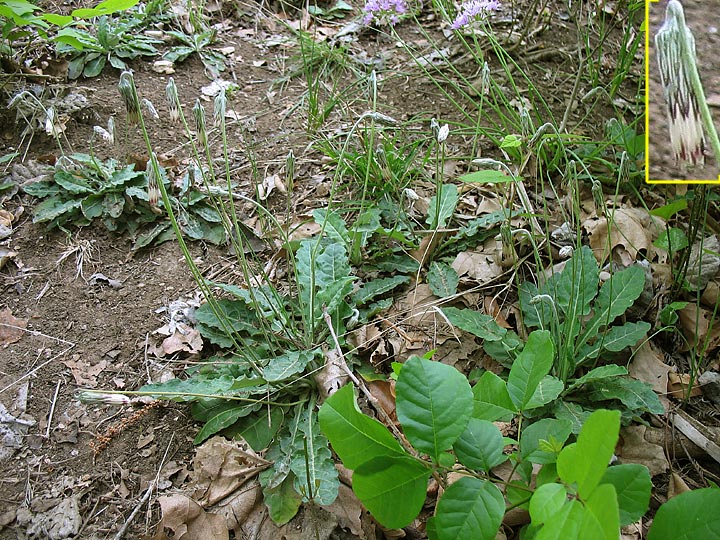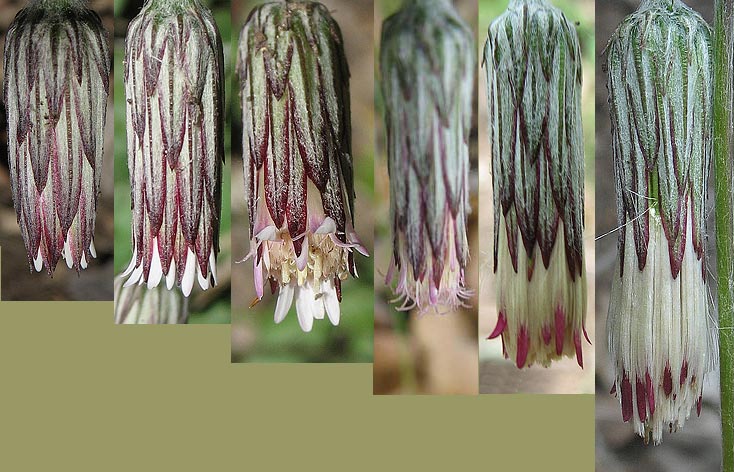


Type II plants occur in relatively shady areas in 4 scattered areas along both sides of Deadman's Creek in Purola Preserve. Plants of Type II have small, but clearly visible, ligulate flowers – originally white, but soon turning purple as the head develops. They are otherwise similar to plants of Type III.
A count of all florets of a type II head (counts 4–6 from very different locations) showed::
| count 1 | count 2 | count 3 | count 4 | count 5 | count 6 | averages for 6 counts of type II heads |
|
|---|---|---|---|---|---|---|---|
| ligulate, pistillate | 21 | 14 | 21 | 12 | 12 | 12 | 15 |
| eligulate, pistillate | 36 | 36 | 50 | 25 | 22 | 17 | 31 |
| central perfect | 11 | 11 | 14 | 8 | 7 | 7 | 10 |
| total: | 68 | 61 | 85 | 45 | 41 | 36 | 56 |
The mouth of the tightly closed involucre at anthesis is shown below. The ligulate flowers, with pale pink style branches, are immediately adjacent to the phyllaries. In the center are some 7 to 8 perfect florets, with white corollas with yellowish (from pollen) anther tubes, a few showing short exerted white style branches (much larger in diameter than those of the ligulate florets). Between the peripheral and central florets, largely hidden in the pappus, are the eligulate pistillate florets.

As a head develops the achene beaks elongate, pushing the florets and pappus out from the involucre. The following image illustrates 6 stages in this process. [Click on a head to view enlargement of that head.]
